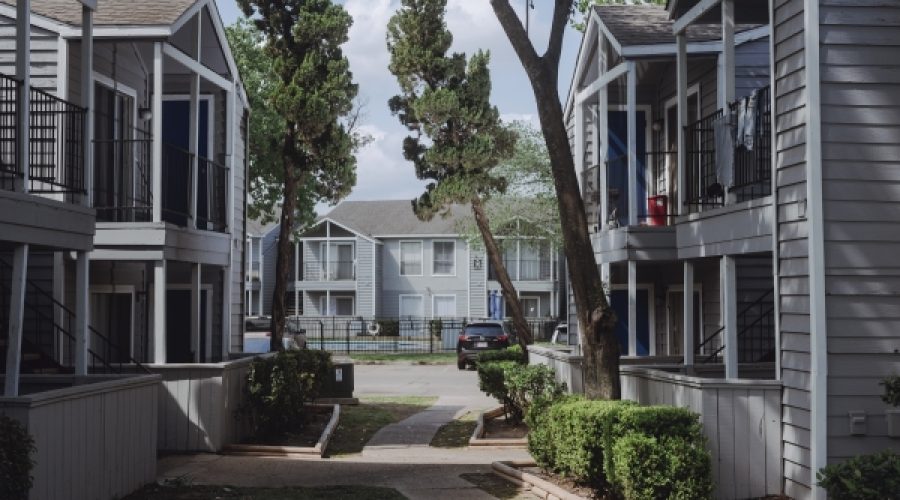Struggling Apartment Sector: What Investors Need to Know About Emerging Challenges in Oman’s Real Estate Market
Concerns Grow Over Apartment Loan Defaults Amid Financial Distress
Despite a surge in rents in recent years due to a housing shortage and inflation, a significant number of rental properties, particularly in the South and Southwest, are encountering financial challenges. While many landlords are currently benefiting from increased rental income, analysts caution that up to 20% of apartment property loans could be at risk of default.
Although rent prices had risen dramatically during the pandemic, the upward trend has recently stalled, and in some regions, rents are beginning to decline. Additionally, rising interest rates, implemented by the Federal Reserve to combat inflation, have heightened mortgage costs for property owners. Though there remains a scarcity of homes, developers may have overbuilt luxury apartments in cities that are seeing diminished rental activity compared to earlier years, notably in Houston and Tampa.
Currently, the situation has not escalated into a crisis. The industry reports a low 1.7% delinquency rate for multifamily loans—significantly better than the 7% for office loans and approximately 6% for those in the hotel and retail sectors, as stated by the Commercial Real Estate Finance Council. Nonetheless, many industry stakeholders are worried that more apartment loans could become distressed, as multifamily loans constitute a large portion of loans identified for close monitoring by experts.
Lisa Pendergast, executive director of the real estate council, noted, “Multifamily is not coming up and punching you in the nose right now, but it’s on everyone’s radar.” This apprehension about apartment loans is just one facet of the broader issues facing commercial real estate, including challenges for older office buildings in the wake of remote work, declining hotel revenues due to reduced business travel, and the ongoing struggles of retail spaces against the rise of online shopping.
The difficulties affecting apartment buildings vary. In some instances, landlords are facing challenges in leasing units, while in others, although occupancy rates may be satisfactory, they are unable to increase rents sufficiently to offset rising loan payments. According to the data provider CRED iQ, nearly 20% of multifamily loans are at risk of becoming delinquent.
A significant area of concern is the one-third of multifamily mortgages that feature floating interest rates, which have led to rising payment obligations as interest rates have increased over the last two years. For instance, following the purchase of the Reserve, a 982-unit building in Brandon, Florida, in early 2022, ZMR Capital faced a more than 50% increase in interest payments, exceeding $6 million. Consequently, the property owner could not meet the mortgage repayment due in April.
Similarly, OWC 182 Holdings, the owner of the Oaks of Westchase in Houston, has been unable to make mortgage payments since April due to skyrocketing interest costs. Mike Haas, CEO of CRED iQ, commented, “The spike in rates is causing the debt service costs on these properties to surge.”
Even landlords with fixed-rate mortgages may struggle during refinancing, as current interest rates are significantly higher. Approximately $250 billion in multifamily loans is set to mature this year, according to the Mortgage Bankers Association. Mark Silverman, a partner at Locke Lorde, stated, “If you need to refinance a loan, then you are refinancing into a more expensive environment. It’s harder to make these buildings profitable.”
While the debt issues affecting office properties are largely concentrated in major cities on the coasts, concerns regarding multifamily properties are particularly pronounced in the Sun Belt. Following a substantial influx of residents to these regions during the pandemic, construction of apartment complexes surged to accommodate demand. However, this trend has reversed recently, with demand for new units significantly declining.
Data from CoStar Group indicates that in 19 major Sun Belt cities, 120,000 new apartment units became available in 2019, attracting 110,000 renters. In contrast, last year saw 216,000 new units with only 95,000 renters filling the vacancies. Additionally, rising construction costs led developers to focus on luxury apartments, which are now facing a downturn in rental prices.
Jay Lybik, national director of multifamily analytics at CoStar Group, remarked on the oversight of demand projections, saying, “The developers just got so far out of hand.”
For investors such as Tides Equities, which expanded its multifamily property portfolio from $2 billion to $6.5 billion in recent years, the decline in rents and property values poses significant challenges. The firm is now struggling to meet loan payments and manage operating expenses.
Despite these obstacles, the multifamily sector is generally better positioned than commercial offices, primarily due to government-backed financing from entities like Fannie Mae and Freddie Mac, designed to enhance housing affordability. Lonnie Hendry of Trepp stated, “If regional banks and large investment banks decide they’re not going to be making multifamily loans, then Fannie and Freddie will simply get more of the business. It’s a fail-safe that the other asset classes do not have.”
Ultimately, while average demand for office spaces has been weakened by shifts in work habits, the enduring need for housing should provide a foundation of support for the multifamily market in the long term. Nonetheless, industry experts anticipate a wave of defaults that could exacerbate problems across the commercial real estate landscape, with Silverman emphasizing that “there are a lot of really strong multifamily assets, but there is going to be collateral damage, and I don’t think it will be small.”
Special Analysis by Omanet | Navigate Oman’s Market
The current instability in apartment financing poses significant challenges for real estate investors, with 20% of multifamily loans at risk of default amid rising interest costs and declining rental demand. Smart investors should consider diversifying portfolios to mitigate risks associated with the potential for a wave of defaults in the multifamily sector. In Oman, this creates an opportunity for strategic acquisitions in emerging markets, as businesses may face pressure to adapt to shifting consumer demands.



